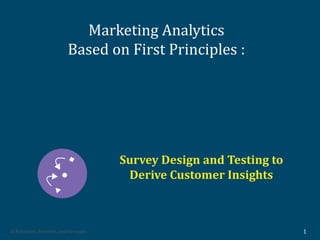The document provides a comprehensive overview of survey design and testing for deriving customer insights, covering principles of questionnaire design, sampling methods, question types, and factor analysis. It outlines key concepts such as the differences between probability and quota sampling, methods for estimating sample sizes, and the importance of clarity in question wording. A systematic approach to scale development and factor analysis is also discussed to ensure data reliability and validity.







































